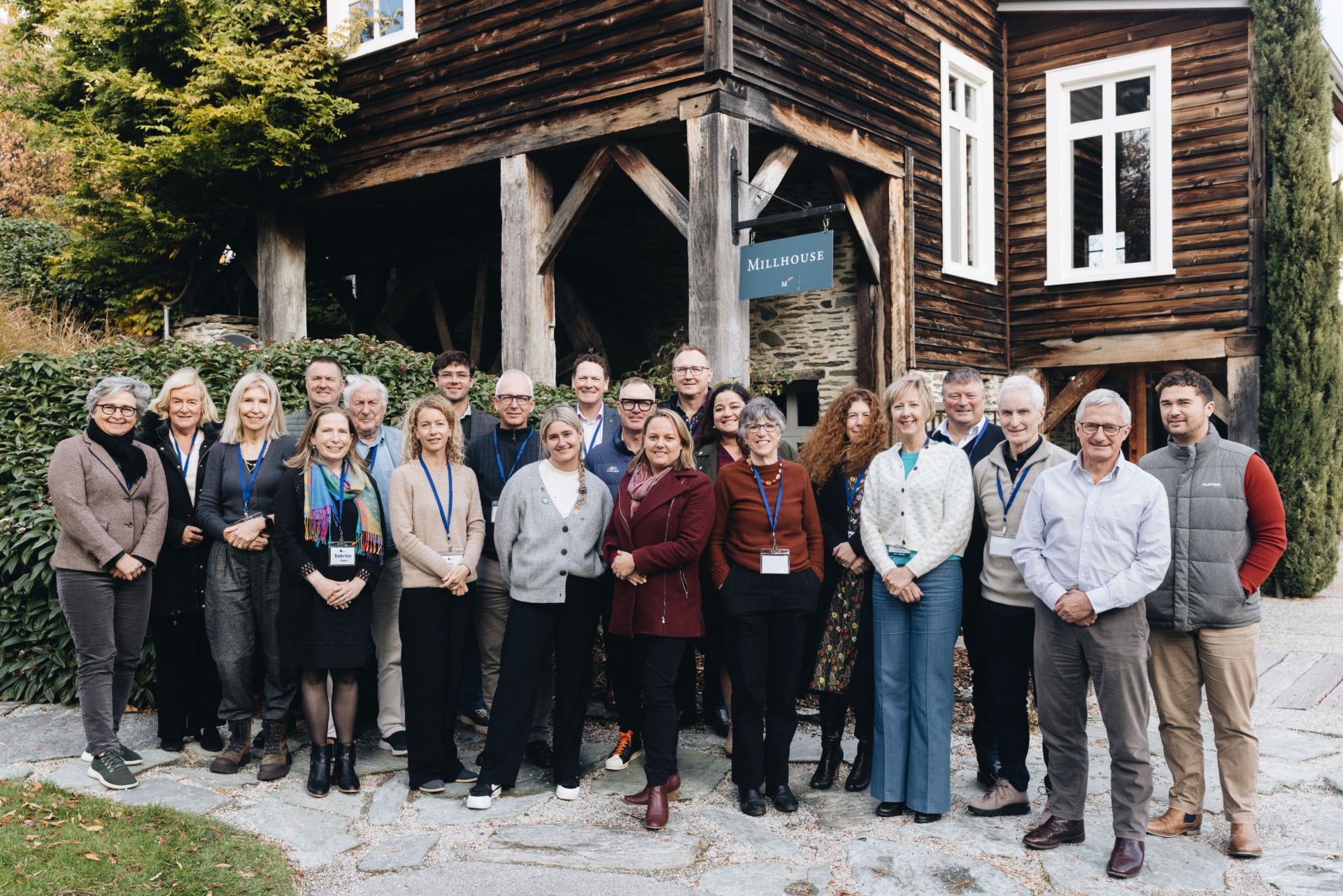This post is part of a series of interviews with thought leaders to explore issues on the frontier of the complex domain of ESG.
![]()
Environmental, social and governance (ESG) issues are quickly gaining prominence in the C-suites of most organizations today, as how they are managed has become a compelling differentiator for executives and investors. While all three elements of ESG have their own set of standards and practices, the “E” typically dominates discussions, prompted by global climate change initiatives such as the United Nations Sustainable Goals for 2030 and the COP26 Climate Conference.
Yet the “S” deserves equal attention, especially as a company’s social responsibility to its employees, customers, suppliers and community has come into greater focus since the pandemic. These stakes are even higher for an organization, like Johnson & Johnson, that’s invested in the resilience and existence of global healthcare systems. “When most people think about health systems, they think hospitals and infrastructure or access to medicines, but the glue in the system are the humans. They are likely to be a nurse, a midwife, or a community health worker, depending on where you are in the world,” says Lauren Moore, Vice President, Global Community Impact at Johnson & Johnson.
Recently, the Aspen Institute Business & Society Program’s Executive Director Judy Samuelson sat down with Moore to see how a healthcare and pharmaceutical leader like Johnson & Johnson tackles sustainability and social responsibility as part of its ESG agenda. Moore, a member of the Aspen Leaders Forum, distills two key lessons from her experience: The “S” must go beyond mere philanthropy in 21st century business, and it must be anchored in the expertise specific to the company and its business model.

Judy Samuelson: You oversee global community impact at J&J. What does that entail?
Lauren Moore: It’s understanding the role and the responsibility that Johnson & Johnson has in the world, around creating better health for people, and then, being an accelerator for what the business is trying to do. One of the things that’s unique about J&J is the business itself is innovating to solve real social challenges. So, it’s not only my team that’s driving the social impact. We work with business units across the company, but my team will be much more focused on low and middle-income communities.
We guide the philanthropic activities of the Johnson & Johnson Foundation, and while philanthropy is part of the responsibility of the Global Community Impact team, we see that work as just one asset in the toolbox. The bigger impact comes from when the business makes different decisions to ensure more people have access to quality health services. That’s when real scale can happen. I like to say that I’m more of a dot connector because I find people across Johnson & Johnson doing interesting work who could be hugely valuable to the social impact work we are trying to do globally. But you’ve got to figure out who they are and what they’re doing and how you can bring their expertise to bear.
And so, it’s much less about traditional philanthropy, much more about, I would say, co-creating real, long-term partnerships with very specific social metrics that we’re trying to achieve, and then trying to bring as much of the business and the expertise to the table as we can to make sure that we achieve whatever that target is.
JS: How would you describe the “S” and how is it defined at Johnson & Johnson?
Moore: Our job is to understand what a company can best do in service for communities. In the early days of corporate philanthropy, we would define the “S” as supporting the communities where our employees live and work, and it might be mostly social services and donations. Today, the companies doing the best work are building societal commitment into their business models and trying to leverage their expertise, people and assets to solve real social challenges. For J&J, that’s in the health space, because that’s where we can bring more to the table. My team works closely with the business to support these efforts.
JS: How does that fit into the overall strategy around ESG? To put it another way, do you have a guiding conceptual framework, or some kind of a central thesis, to your approach to sustainability?
Moore: One of the pillars of our ESG strategy has a focus on equitable access. Our commitment to frontline health workers is a keystone of equitable access. Another major initiative called Our Race to Health Equity acknowledges that racism is a public health threat. A person’s race too often determines whether they can access health care in the first place and what level of quality they receive. We started that program in the US, and our business leaders are bringing it into other parts of the world. Our success as a company over the long term depends on how well we improve health care access and health equity. And investors – and other stakeholders – are watching this progress closely. Those two together are key platforms behind the S in ESG for J&J, along with a focus on access to medicines.
JS: It’s sometimes hard to measure the impact of social responsibility. It’s not as tangible as environmental impact, or it can mean different things in different contexts and culture of a company. In your job, are you able to carve out specific metrics?
Moore: We are. The expectations are high that we will have metrics and that we will report on them every year. Our ESG report is called Health for Humanity, and it looks at all of these publicly-set targets. We push against communicating the dollar goal because when we say Johnson & Johnson and Johnson & Johnson Foundation committed $300 million to frontline health workers, I don’t think that tells you much, but people do like to know the amount. We follow this up with details of our reach through programmatic work like training and education.
We’ve got deep metrics on how we will support one million frontline health workers and reach 100 million people. Every year we track against those numbers. We believe there’s a way to strengthen local health systems through health workers, and we will do this in at least 10 geographies through what we’re calling Impact Hubs. We are collaborating with Ministries of Health and other key funders and implementers to facilitate best practices regionally, across all hubs.
Similarly, as part of Our Race to Health Equity, we’ve said we would develop and support 200,000 healthcare workers, because we had early feedback that people want health workers who look like them. We are working with the National Black Nurses Association to understand why diverse health workers often don’t make it all the way through the pipeline. We have specific metrics on where we think, because of our expertise, we can actually influence change.
JS: Do you have a specific approach to actually bring in the voices you’re trying to reach?
Moore: The differentiator is not just making charitable contributions but developing a much deeper, longer-term relationship and stakeholder input to be credible and actually get something done. We have long-term relationships with different professional organizations such as the International Council of Nurses and the National Black Nurses Association. There are built-in feedback loops. We collaborated with Harvard’s School of Public Health and met with a number of community-based NGOs for Our Race to Health Equity.
JS: How about in the developing world? What’s necessary to make a partnership successful?
Moore: Anywhere we want to do deep community work, we need to have access to stakeholders in that community and country because the dynamics are completely different there. In Kenya, for example, we collaborated with the Ministry of Health to create standards to compensate community health workers for their work. The country was committed to achieving Universal Health Coverage and a big part of our advocacy was around building respect and recognition for the work done by frontline health workers. Community health workers, for example, were volunteers and not getting the respect they deserved because it was not considered a job. If they are not paid, how can you demand the level of quality that you need? We started this work with the Ministry of Health in 2016, and in 2021 helped launch a national community health strategy to formally integrate community health workers into the health system and get them paid for their work.
JS: What about investors? Have you seen greater interest? What’s their reaction to your work?
Moore: A year or two ago we rarely joined investor calls. Now it’s very common, and at J&J we’ve created an ESG investor webinar because of the high level of interest. Most investors do believe we have a strong track record, and that we prioritize strategic impact vs. making a lot of small grants that don’t always move the needle on what you are trying to achieve. We have a responsibility to the world to be meaningful and aspirational with our expertise.
For an organization whose core mission involves fostering a healthier world, the “S” in ESG requires an entire ecosystem centered on community and people. Tackling the societal responsibilities of an organization involves keeping the human aspect in mind at all times—and continually redefining the value the company is creating in the world.
![]()
This post is the third in a series of interviews with thought leaders to explore issues on the frontier of the complex domain of ESG. In our inaugural Aspen ESG Summit held in Aspen, Colorado July 11-13, we will continue to seek fresh insights on ESG strategies and practices as catalysts for positive change.
We welcome Johnson & Johnson as a sponsor for the event and thank them for their support.
SUBSCRIBE TO OUR MONTHLY NEWSLETTER!
Want more insights like these on business and the health of society? Sign up to receive thought leadership and updates from the Business & Society Program each month!

